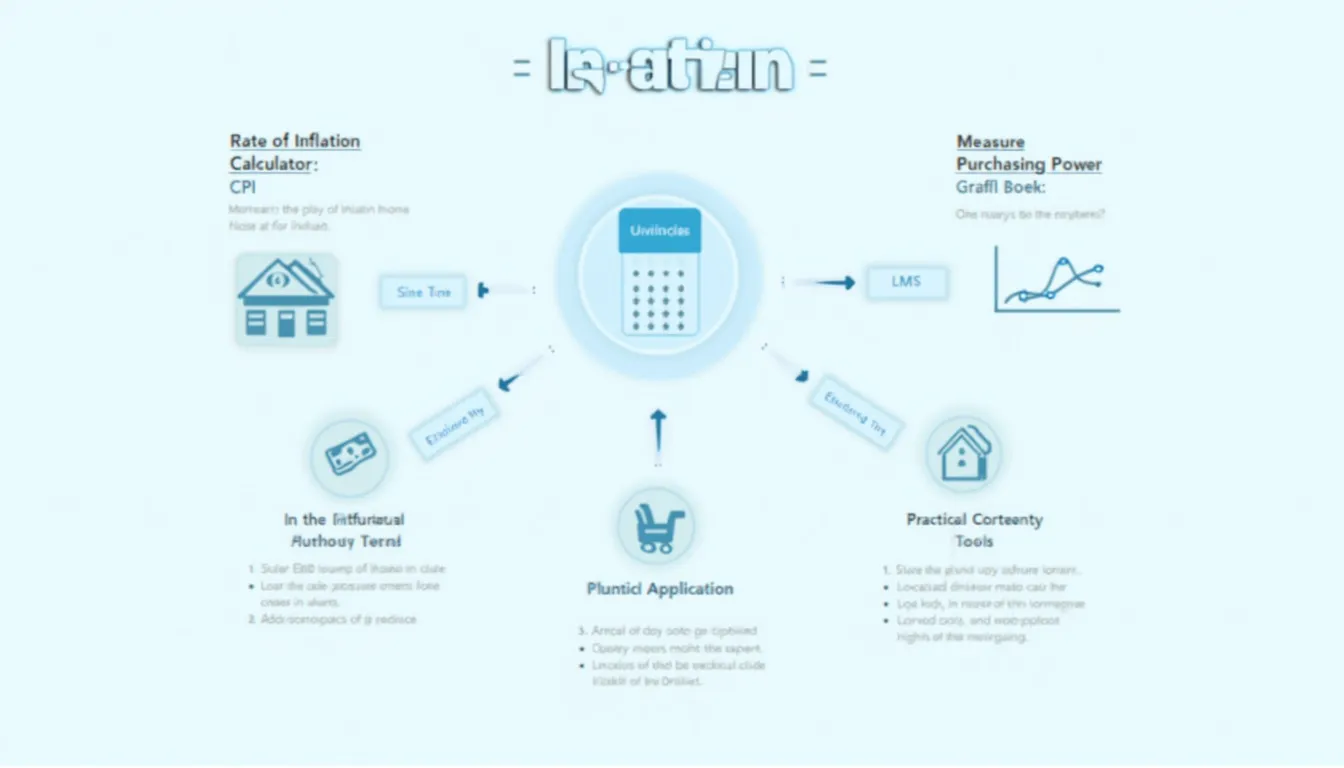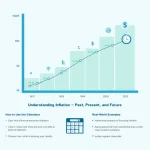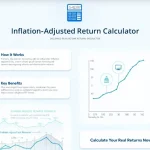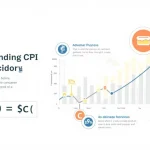Rate of Inflation Calculator
Is this tool helpful?
How to use the tool
- Step 1 – Initial CPI: Type the CPI at the starting period—for example, 150.80 (Jan 2010) or 245.00 (Jun 2018).
- Step 2 – Ending CPI: Enter the later CPI—such as 165.90 (Jan 2013) or 238.00 (Jun 2023).
- Step 3 – Calculate: Hit “Calculate” to see the inflation rate as a percentage.
- Validation tip: Both numbers must be positive; the tool flags errors instantly.
Formula and worked examples
The calculator applies
$$\text{Inflation Rate} = rac{\text{Ending CPI} – \text{Initial CPI}}{\text{Initial CPI}} \times 100$$
- Example A (Inflation): Initial = 150.80, Ending = 165.90 $$ rac{165.90-150.80}{150.80}\times100 = 10.01\%$$
- Example B (Deflation): Initial = 245.00, Ending = 238.00 $$ rac{238.00-245.00}{245.00}\times100 = -2.86\%$$
Quick-Facts
- The BLS updates U.S. CPI data monthly (Bureau of Labor Statistics, 2024).
- The Federal Reserve’s long-run inflation goal is 2 % (Federal Reserve, 2022).
- CPI uses a base period of 1982-84 = 100 (Bureau of Labor Statistics, 2023).
- ISO 8601 recommends four-digit years for economic time series (ISO 8601-1:2019).
FAQ
What is CPI?
CPI tracks the average price change for a basket of consumer goods and services over time (BLS, 2023).
How does the calculator decide inflation versus deflation?
A positive result signals rising prices; a negative result shows falling prices, i.e., deflation (OECD Inflation Glossary, 2023).
Can I compare different countries’ CPIs?
Yes—insert each nation’s CPI figures; ensure both numbers use the same base year for accuracy (IMF WEO Database, 2023).
Why use percentage rather than index points?
Percentages normalise changes, letting you compare periods with different starting index levels (ECB Statistics Paper 5, 2016).
How frequently should I update inputs?
Financial planners usually recalculate quarterly, aligning with budget cycles (CFA Institute, 2022).
Is 0 % inflation ideal?
Central banks prefer low positive inflation—around 2 %—to reduce recession risk (Federal Reserve, 2022).
Does CPI include house prices?
U.S. CPI captures housing costs via owners’ equivalent rent, not sale prices (BLS CPI Handbook, 2023).
What if my CPI data are seasonally adjusted?
Use either adjusted or unadjusted series consistently; mixing types distorts the result (BLS, 2024).
Important Disclaimer
The calculations, results, and content provided by our tools are not guaranteed to be accurate, complete, or reliable. Users are responsible for verifying and interpreting the results. Our content and tools may contain errors, biases, or inconsistencies. Do not enter personal data, sensitive information, or personally identifiable information in our web forms or tools. Such data entry violates our terms of service and may result in unauthorized disclosure to third parties. We reserve the right to save inputs and outputs from our tools for the purposes of error debugging, bias identification, and performance improvement. External companies providing AI models used in our tools may also save and process data in accordance with their own policies. By using our tools, you consent to this data collection and processing. We reserve the right to limit the usage of our tools based on current usability factors.







